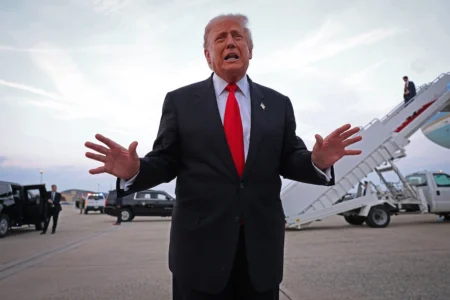The combined wealth of the top 10 US billionaires increased by $698 billion over the past year, highlighting a widening gap between the ultra-rich and ordinary Americans. A new report warns that policies from both Republican and Democratic administrations have worsened economic inequality.
Using Federal Reserve data from 1989 to 2022, researchers found that the top 1% of households gained 101 times more wealth than the median household and 987 times more than households in the bottom 20% income bracket. This translated to an increase of $8.35 million per top 1% household, compared with $83,000 for the average household over the 33-year period.
Over 40% of the US population, including nearly half of all children, now live with incomes below twice the national poverty line. When compared with 38 other high-income countries in the Organisation for Economic Co-operation and Development (OECD), the United States has the highest relative poverty rate, the second-highest child poverty and infant mortality rates, and the second-lowest life expectancy.
“Inequality is a policy choice,” said Rebecca Riddell, senior policy lead for economic justice at Oxfam America. “These comparisons show that the US could make very different choices to reduce poverty and inequality.”
The report explains how US systems, including the tax code, social safety nets, and workers’ protections, have been weakened over time. This has allowed wealth to concentrate into fewer hands, increasing both economic and political power at the top.
The Trump administration’s 2025 “one big, beautiful bill,” passed by Congress in May, is described as one of the largest wealth transfers upward in decades. Tax cuts for corporations and wealthy individuals were key drivers of this shift.
But the report emphasizes that wealth inequality is not solely a Republican issue. “Policymakers have been choosing inequality with bipartisan support,” Riddell said. Over the past 40 years, both parties have supported cuts to taxes, reductions in social safety nets, and labor policy changes that favored the wealthy.
Oxfam’s report outlines four policy areas to reduce inequality: rebalancing power through campaign finance and antitrust reforms; using taxes on the wealthy and corporations to fund public services; strengthening social safety nets; and protecting unions.
Political challenges remain. Social safety nets and taxation have long faced stigma, reinforced by concepts like the “welfare queen” during the Reagan era. Taxation is often seen as a burden rather than a tool to address economic gaps.
“What’s needed is a different kind of politics,” Riddell said. “One focused on delivering for ordinary people and rapidly reducing inequality. Proven reforms could reverse troubling trends if implemented quickly.”
The report also highlights local efforts to combat inequality. Union representatives in Maryland noted that many Americans are recognizing the system favors the wealthiest and are increasingly seeking change.
“I think it’s brilliant that they see this as an opportunity,” Riddell said. “This is a moment to realize our broader power and push for policies that benefit the majority, not just the top 1%.”
As the wealth of America’s super-rich continues to grow, the report calls for urgent reforms in taxation, social protection, and labor rights to prevent inequality from spiraling further.







